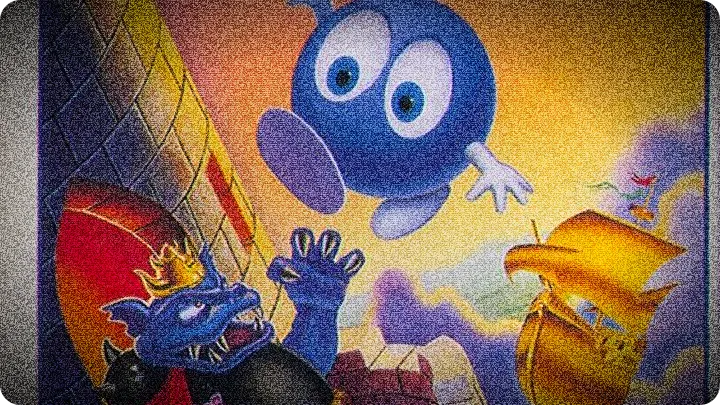Fun fact: HAL Laboratory, the team behind Adventures of Lolo 2, became one of Nintendo’s most trusted partners. They designed inventive puzzles like this one and later created Kirby. It’s comforting to see that clever design streak already shining as we flick the power on and the title screen appears.
 Cartridge seated, TV warmed, and Lolo bobs onto the screen. We’re dropped into a room that looks harmless—until the enemies start moving. The controls feel precise: four directions and a button to push or interact. That’s exactly what you need when one wrong step can strand you in a storm of projectiles.
Cartridge seated, TV warmed, and Lolo bobs onto the screen. We’re dropped into a room that looks harmless—until the enemies start moving. The controls feel precise: four directions and a button to push or interact. That’s exactly what you need when one wrong step can strand you in a storm of projectiles.
 The rooms are compact and clear about what they teach. Early puzzles rely on simple pushes and openings. Then eggs, heart pickups, and enemy fire enter the mix. Each change forces you to rethink the tile in front of you. The look is cheerful: simple sprites, pleasing colors, and a jaunty tune that loops without grating. It feels like classic console-room charm.
The rooms are compact and clear about what they teach. Early puzzles rely on simple pushes and openings. Then eggs, heart pickups, and enemy fire enter the mix. Each change forces you to rethink the tile in front of you. The look is cheerful: simple sprites, pleasing colors, and a jaunty tune that loops without grating. It feels like classic console-room charm.
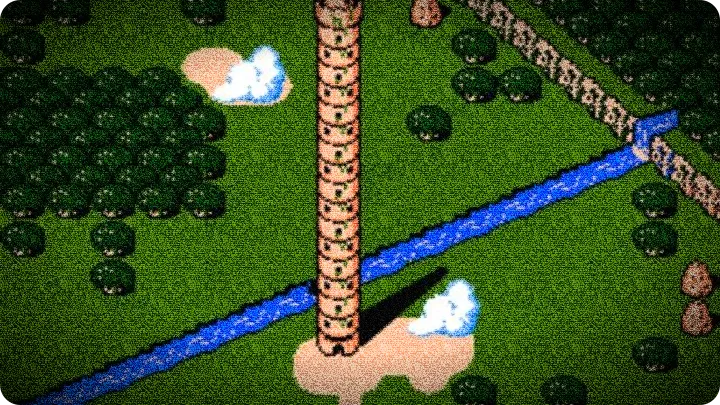
Gameplay Highlights
 The joy lies in how mechanics stack together. Push a block to create cover. Bait a dragon into becoming an egg. Use that egg as a stepping stone or shield against another foe. Every tile has purpose; nothing feels wasted.
The joy lies in how mechanics stack together. Push a block to create cover. Bait a dragon into becoming an egg. Use that egg as a stepping stone or shield against another foe. Every tile has purpose; nothing feels wasted.
 The difficulty grows with care. Chapters bundle rooms into bite-sized tests. A few easy ones lull you in, then one puzzle makes you pause and plan. The fixed screen suits this style perfectly. Victory feels best when one elegant sequence clears a room instead of brute force.
The difficulty grows with care. Chapters bundle rooms into bite-sized tests. A few easy ones lull you in, then one puzzle makes you pause and plan. The fixed screen suits this style perfectly. Victory feels best when one elegant sequence clears a room instead of brute force.
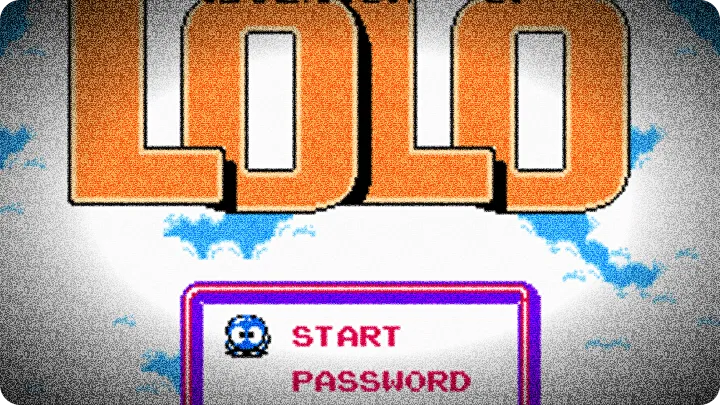
Hot Tips
- Think two moves ahead: A tile you push now may be the only path to block a projectile three steps later.
- Use eggs creatively: Turning a green dragon into an egg is defensive as much as it is offensive — eggs can block shots and change enemy paths.
- Conserve heart pickups: Hearts affect the room’s state — treat them as resources rather than instant pickups, and only grab them when the timing is right.
- Retrace in your head: There are no long checkpoints; a single mistaken push often means restarting the room. Pause and plan before committing.
- Cartridge-era advice: If the screen looks twitchy, a gentle cleaning of the connector never hurt the game — but no excessive blowing, please.
Memorable Moments & Anecdotes
 There was that one fiendish room, the one with the diagonal conveyors and three shooters, where I thought we were doomed. We ended up baiting two enemies into colliding paths, using a pushed block as a temporary shield, and then slipping between their lines of fire to the treasure. My heart did a small leap when the door opened.
There was that one fiendish room, the one with the diagonal conveyors and three shooters, where I thought we were doomed. We ended up baiting two enemies into colliding paths, using a pushed block as a temporary shield, and then slipping between their lines of fire to the treasure. My heart did a small leap when the door opened.
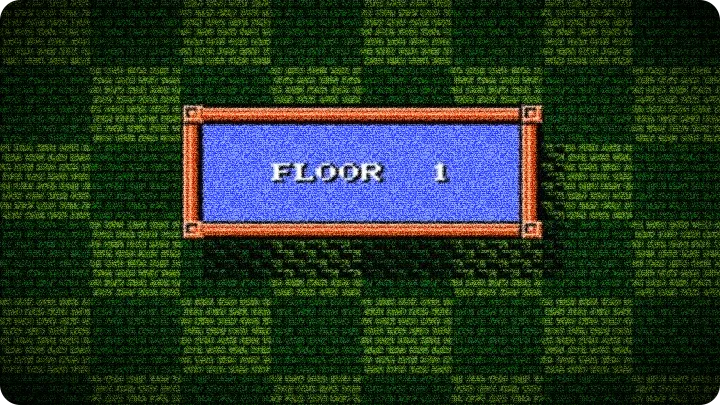
 The music during the late stages has this way of making the room feel like a tighter test of everything you learned. The final tower — the sequence toward the end — is designed like a compact exam. It does not add new gimmicks so much as require near-perfect execution of all the ones you have seen. That simplicity is the game’s signature: mastery through repetition and thought, not spectacle.
The music during the late stages has this way of making the room feel like a tighter test of everything you learned. The final tower — the sequence toward the end — is designed like a compact exam. It does not add new gimmicks so much as require near-perfect execution of all the ones you have seen. That simplicity is the game’s signature: mastery through repetition and thought, not spectacle.
 About the final boss: it is less “big health bar” and more “final puzzle.” The boss sits in a room that looks like every other puzzle until the mechanics of timing, egg placement, and shot-blocking all converge. You cannot rely on luck; success is methodical. Clearing that room felt like graduating from a very strict school of tile logic.
About the final boss: it is less “big health bar” and more “final puzzle.” The boss sits in a room that looks like every other puzzle until the mechanics of timing, egg placement, and shot-blocking all converge. You cannot rely on luck; success is methodical. Clearing that room felt like graduating from a very strict school of tile logic.
 There are a couple of rough edges worth noting. The visual variety is limited: rooms reuse the same tiles and enemy sprites so the novelty can wear thin after many levels. Also, some later rooms rely on trial-and-error more than elegant deduction; you will occasionally spend time learning what not to do rather than discovering what to do. For players who prefer constant new mechanics or a more forgiving checkpoint system, that can be frustrating.
There are a couple of rough edges worth noting. The visual variety is limited: rooms reuse the same tiles and enemy sprites so the novelty can wear thin after many levels. Also, some later rooms rely on trial-and-error more than elegant deduction; you will occasionally spend time learning what not to do rather than discovering what to do. For players who prefer constant new mechanics or a more forgiving checkpoint system, that can be frustrating.
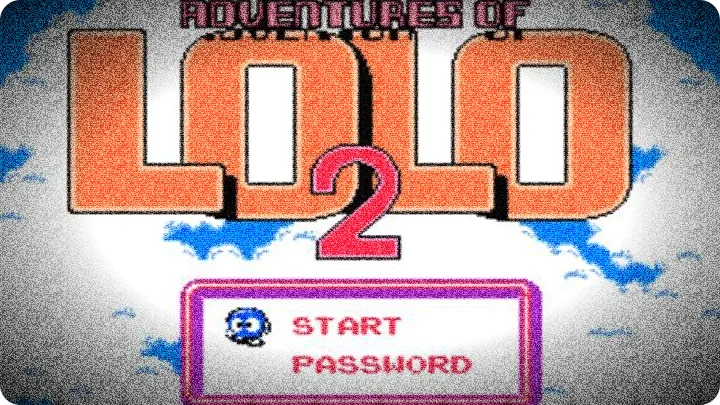
 Overall, this is a clever little puzzle-action package. It rewards patience, rewards planning, and gives you that old-school satisfaction when everything snaps into place. It is not flashy, and it can be strict, but its design is honest. We are enjoying it and also ready to come back tomorrow to tackle the rooms that chewed us up tonight. It earns a solid B — good, thoughtful, and just shy of flawless.
Overall, this is a clever little puzzle-action package. It rewards patience, rewards planning, and gives you that old-school satisfaction when everything snaps into place. It is not flashy, and it can be strict, but its design is honest. We are enjoying it and also ready to come back tomorrow to tackle the rooms that chewed us up tonight. It earns a solid B — good, thoughtful, and just shy of flawless.
more info and data about Adventures of Lolo 2 provided by mobyGames.com

